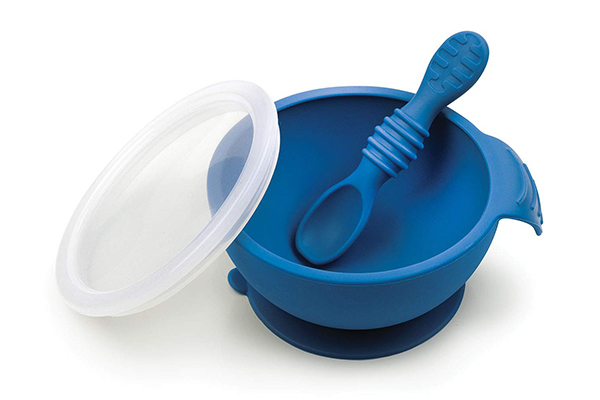When choosing baby bowls, there are several materials to consider, each with its own advantages and disadvantages. The "best" material often depends on your personal preferences, lifestyle, and safety considerations. Here are some common materials for baby bowls, along with their pros and cons:
Silicone:
Pros: Silicone is a popular choice for baby bowls due to its flexibility, durability, and safety. It's free from BPA, PVC, and phthalates, making it non-toxic. Silicone is easy to clean, dishwasher-safe, and resistant to stains and odors. It's also microwave-safe and freezer-safe.
Cons: Some silicone bowls may be more expensive than other options. Over time, silicone may develop slight discoloration or stains from certain foods.
Plastic:
Pros: Plastic baby bowls are lightweight, affordable, and widely available. Some newer plastics are BPA-free and designed with safety in mind. They come in various colors and designs, making mealtime fun for babies.
Cons: Not all plastics are safe, so look for BPA-free and food-grade options. Plastic bowls can scratch and wear over time, potentially harboring bacteria. They may also absorb odors and colors from certain foods.
Stainless Steel:
Pros: Stainless steel baby bowls are durable, long-lasting, and resistant to scratches. They are also free from harmful chemicals and don't retain flavors or odors. Stainless steel bowls can withstand high temperatures, making them safe for use in the dishwasher and on stovetops.
Cons: Stainless steel bowls can get hot when filled with hot foods, which might not be suitable for young children. They are also heavier and may dent if dropped.
Glass:
Pros: Glass baby bowls are non-toxic, free from chemicals, and do not leach any substances into food. They are sturdy, easy to clean, and don't retain flavors or odors. Glass is microwave-safe and can be used for both hot and cold foods.
Cons: Glass is heavier and more fragile than other materials, which can be a concern if dropped. However, some glass baby bowls come with protective silicone sleeves for added safety.
Bamboo or Wood:
Pros: Bamboo and wood baby bowls are natural and eco-friendly options. They are lightweight, durable, and biodegradable. They can be visually appealing and come in various designs.
Cons: Wood and bamboo bowls may require more maintenance to prevent cracking, and they may not be as easy to clean as other materials. Some options might be treated with varnishes or finishes that could potentially be a concern for baby safety.
Ultimately, the best material for baby bowls will depend on factors such as your preferences, concerns about safety, and how you plan to use and care for the bowls. Whichever material you choose, prioritize safety, ease of cleaning, and durability to ensure a positive mealtime experience for your baby.

